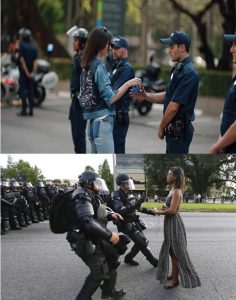Youtube culture has changed drastically since it was created in 2005. In the early years of the media site, silly home videos were the main material but now content is as flashy as possible. This change evolved from the participatory culture that has arisen over the years with the rapid influx in technology and media circulation. Henry Jenkins describes this new culture as a participatory one because we are “shaping, sharing, reframing, and remixing media content,” (2) and getting more involved in the material we are consuming.
In the beginning, money wasn’t the motivation for creators. Videos were uploaded for fun but now, the culture of Youtube today has changed immensely. Jenkins talks about the two concepts of media circulation; stickiness and spreadability. Stickiness seeks to gain viewership and profit off the numbers. It’s quite formulaic and measures “success of online commerce.” (4) Spreadability, on the other hand, relies on viewer participation and adequate platforms. Viral videos can’t necessarily be planned. Someone can watch a goofy singing video and decides to share it with their friend who posts it to facebook. Youtube is spreadable by nature and works as a platform that allows for media to go viral. However, the videos and culture of the site have become less genuine and more strategic. The concept of the “Youtuber” has transformed the motivation of video creation with the end goal of making money, producing content that is sticky and holds the viewer’s on videos to generate revenue.
The new breed of youtuber has integrated the stickiness model into their content so subtly that we except it. One of the most common examples is clickbait. Popularized by exaggerated “storytime Youtubers”, such as Tana Mongeau, clickbait is a prime example of stickiness for it gets the viewer’s attention and holds it because the viewer is waiting for the story to pan out. It is rare that the clickbait is genuine and often uses extra phrases like “… GONE WRONG” or “live footage” to increase views. Other channels attract viewers by promising announcements or giveaways, often happening at the end of the video so the audience watches the entirety. This results in more views and more money. However, not all popular content on Youtube is out to make money by clicks alone. Vloggers like Jake Paul or David Dobrik create content that is bound to spread because of its intensity. The videos are so wild and addictive that they are just waiting to be shared, reposted, and spread. This shows the link between spreadability and stickiness. Spreadability, or what makes things spreadable and shareable, can direct stickiness and the way content creators decide to frame videos. Youtube culture has become sticky and less natural than it was 13 years ago.




